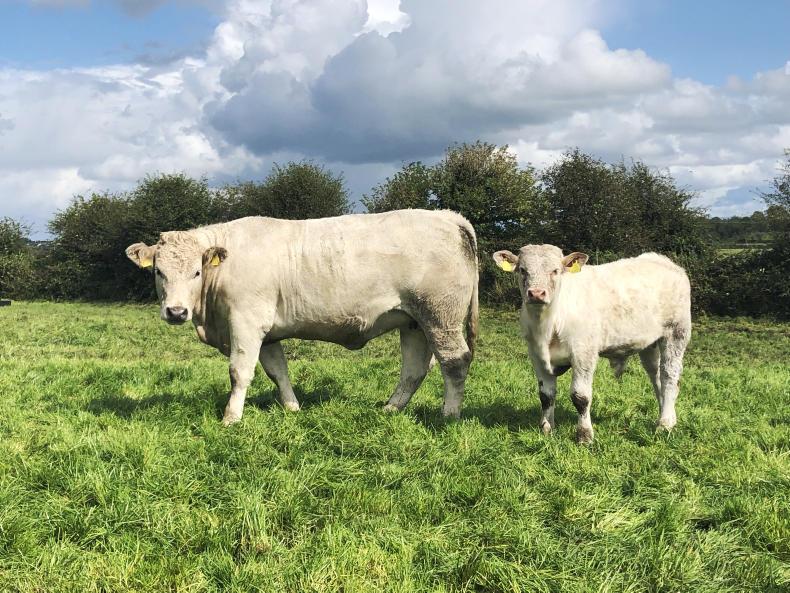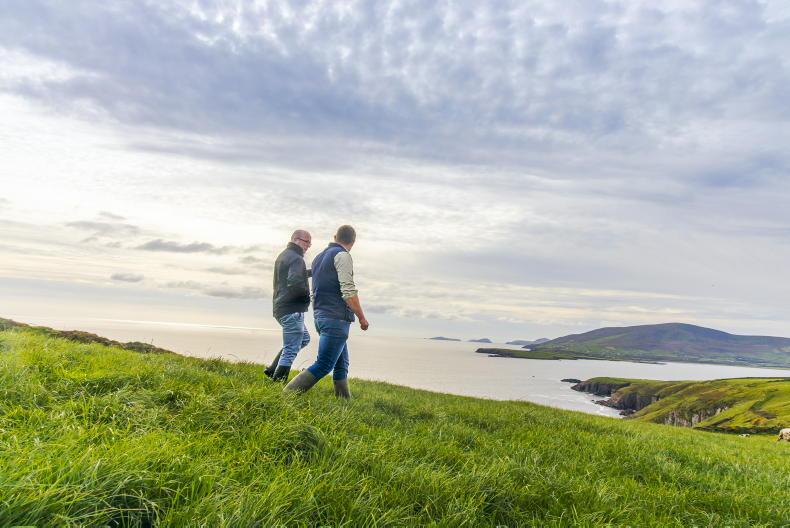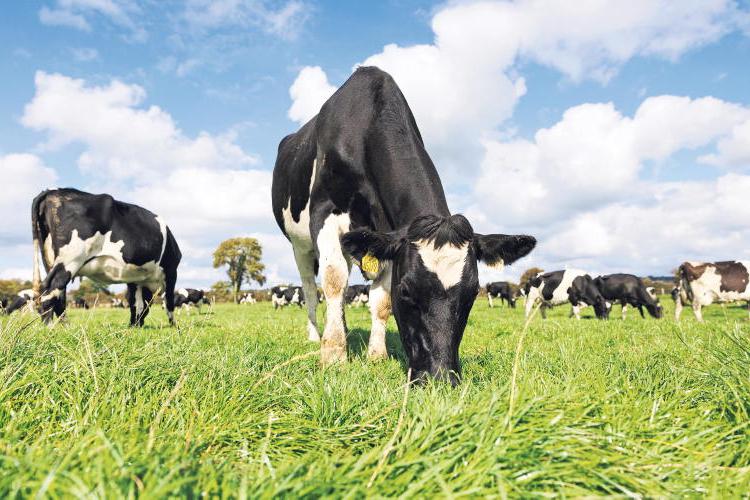The BEAM scheme has €100m available for payment. There are a number of conditions that a farmer has to meet. These include:
1 Membership of a Bord Bia Quality Assurance Scheme,
Or
2 Membership of a DAFM agri-environmental scheme,
And
3 A 5% reduction in the level of bovine livestock manure nitrogen produced on each farm.
Membership of 1 or 2 must be attained by the time of application or before any payment issues. The scheme is targeted towards beef farmers. Eligibility requirements include:
Valid herd number with eligible bovine animals.BPS application submitted in 2018.Dairy herds are not eligible for the scheme and dealer or agent herds are also not eligible for payment. Once a farmer is identified as a co-op supplier, the farmer will be excluded from the scheme.
Eligible animals
Bovine animals (older than 12 months of age) sent to slaughter in the reference period from 24 September 2018 and 12 May 2019.Suckler cows with progeny born from 1 January 2018 and 31 December 2018.Cull cows including Friesians are eligible for payment as long as they were slaughtered out of a beef herd. Payment rates
Up to a maximum of 40 suckler cows with progeny born in 2018 at €40/head, and/or
Up to a maximum of 100 bovine animals older than 12 months sent for slaughter during the reference period (24 September 2018 to 12 May 2019)at a payment rate of €100/head.The maximum payment per farm will be €11,600 where at least 40 sucklers calved in 2018 and 100 animals were finished from 24 September to 12 May.
The average payment on suckler-to-weanling farms will be €553 while the average payment on finishing farms will be €1,819 per herd if all eligible farms apply for the scheme. It is unclear as to what happens to the scheme payment rates if it is undersubscribed.
How can I apply?
The application process is completed through the agfood portal. It is relatively simple, with all the eligibility criteria already populated from the Department of Agriculture animal movements database. The total level of nitrogen produced during the reference period and the level by which it has to be reduced is also detailed on the application screen. For farmers who get agricultural consultants to apply for the Basic Payment Scheme, the consultant or Teagasc will be able to apply on their behalf. The closing date for applications is midnight on Sunday 15 September.
Nitrogen reduction
This has been the most contentious issue and is the reason for many farmers not applying to join the scheme. Total farm nitrogen must be reduced by 5% for the period from 1 July 2020 to 30 June 2021 as compared with the period 1 July 2018 to 30 June 2019.
Exporting slurry or renting additional land will not be allowed as a measure to reduce nitrogen on the farm. It is the overall nitrogen produced on the farm that has to be reduced and not the organic nitrogen produced per hectare.
Nitrogen reduction examples
Farm 1: farm with 70 suckler cows and 70 calves to be sold at 12 months has a total nitrogen figure of 6,230kg for the year.
The 5% reduction required is 312kg.
Option 1: reduce suckler cow number by four (260kg) and reduce calves by four (96kg) to give a total reduction of 356kg.Option 2: reduce suckler cow numbers by three (195kg) and sell 10 calves at six months rather than 12 months (120kg) to give a reduction of 315kg.Farm 2: farm with 70 one- to two-year-old cattle has a total nitrogen figure of 3,990kg for the year. The 5% reduction required is 200kg.
Reduce one- to two-year-old cattle numbers by four to give a total reduction of 228kg.
Farm 3: farm with 14 suckler cows and 12 calves to be sold at 12 months has a total nitrogen figure of 1,198kg for the year. The 5% reduction required is 60kg.
Option 1: reduce suckler cow numbers by one (65kg).Option 2: sell six calves at six months rather than 12 months (60kg).Francis Gorman, Co Laois
“I have applied to join the scheme. While it’s not enough, it’s too much money to turn down in a time when money is very tight. We need long-term solutions to tackle the lack of profit on drystock farms. We will need another fund to underpin losses being made at the moment.”
Errol Gibson, Co Cavan
“I won’t be applying for the BEAM scheme. It’s worth about €1,000 to me but I have been building my herd for a number of years. The reference number of cows is five less than where current numbers are so it means I would have to sell six to seven cows to comply with the scheme. It doesn’t make sense to do this for €1,000.”
Sean Murray, Co Donegal
“It will be a welcome boost but I see it as a small token payment when I look at the losses my finishing enterprise has endured over the past 12 months. Cattle being killed at the moment are losing a lot more and we will need another fund next year. I think the minister needs to look at the industry and formulate a plan as to where we are going.”
Comment
The scheme has seen a mixed reaction from farmers and this has been evident with the slow uptake seen in applications to date.
The scheme is far from perfect and flies in the face of what many farmers have been advised to do over the years – increasing stocking rate, higher output and in general driving their business forward.
For many progressive farmers who have been building stock numbers in recent years, it is very difficult to turn this on its head and reduce numbers.
It’s been a common theme in many of the schemes introduced in recent years, with the Department putting enough barriers in place to keep participation in schemes low.
Without some changes such as dropping the condition to reduce numbers, farmer participation will remain low and huge numbers of farmers will be locked out of important funding that could help to underpin their farms.
The IFA is adamant that farmers who are unsure about applying to apply before the closing date and withdraw at a future date if concessions are not allowed.
The BEAM scheme has €100m available for payment. There are a number of conditions that a farmer has to meet. These include:
1 Membership of a Bord Bia Quality Assurance Scheme,
Or
2 Membership of a DAFM agri-environmental scheme,
And
3 A 5% reduction in the level of bovine livestock manure nitrogen produced on each farm.
Membership of 1 or 2 must be attained by the time of application or before any payment issues. The scheme is targeted towards beef farmers. Eligibility requirements include:
Valid herd number with eligible bovine animals.BPS application submitted in 2018.Dairy herds are not eligible for the scheme and dealer or agent herds are also not eligible for payment. Once a farmer is identified as a co-op supplier, the farmer will be excluded from the scheme.
Eligible animals
Bovine animals (older than 12 months of age) sent to slaughter in the reference period from 24 September 2018 and 12 May 2019.Suckler cows with progeny born from 1 January 2018 and 31 December 2018.Cull cows including Friesians are eligible for payment as long as they were slaughtered out of a beef herd. Payment rates
Up to a maximum of 40 suckler cows with progeny born in 2018 at €40/head, and/or
Up to a maximum of 100 bovine animals older than 12 months sent for slaughter during the reference period (24 September 2018 to 12 May 2019)at a payment rate of €100/head.The maximum payment per farm will be €11,600 where at least 40 sucklers calved in 2018 and 100 animals were finished from 24 September to 12 May.
The average payment on suckler-to-weanling farms will be €553 while the average payment on finishing farms will be €1,819 per herd if all eligible farms apply for the scheme. It is unclear as to what happens to the scheme payment rates if it is undersubscribed.
How can I apply?
The application process is completed through the agfood portal. It is relatively simple, with all the eligibility criteria already populated from the Department of Agriculture animal movements database. The total level of nitrogen produced during the reference period and the level by which it has to be reduced is also detailed on the application screen. For farmers who get agricultural consultants to apply for the Basic Payment Scheme, the consultant or Teagasc will be able to apply on their behalf. The closing date for applications is midnight on Sunday 15 September.
Nitrogen reduction
This has been the most contentious issue and is the reason for many farmers not applying to join the scheme. Total farm nitrogen must be reduced by 5% for the period from 1 July 2020 to 30 June 2021 as compared with the period 1 July 2018 to 30 June 2019.
Exporting slurry or renting additional land will not be allowed as a measure to reduce nitrogen on the farm. It is the overall nitrogen produced on the farm that has to be reduced and not the organic nitrogen produced per hectare.
Nitrogen reduction examples
Farm 1: farm with 70 suckler cows and 70 calves to be sold at 12 months has a total nitrogen figure of 6,230kg for the year.
The 5% reduction required is 312kg.
Option 1: reduce suckler cow number by four (260kg) and reduce calves by four (96kg) to give a total reduction of 356kg.Option 2: reduce suckler cow numbers by three (195kg) and sell 10 calves at six months rather than 12 months (120kg) to give a reduction of 315kg.Farm 2: farm with 70 one- to two-year-old cattle has a total nitrogen figure of 3,990kg for the year. The 5% reduction required is 200kg.
Reduce one- to two-year-old cattle numbers by four to give a total reduction of 228kg.
Farm 3: farm with 14 suckler cows and 12 calves to be sold at 12 months has a total nitrogen figure of 1,198kg for the year. The 5% reduction required is 60kg.
Option 1: reduce suckler cow numbers by one (65kg).Option 2: sell six calves at six months rather than 12 months (60kg).Francis Gorman, Co Laois
“I have applied to join the scheme. While it’s not enough, it’s too much money to turn down in a time when money is very tight. We need long-term solutions to tackle the lack of profit on drystock farms. We will need another fund to underpin losses being made at the moment.”
Errol Gibson, Co Cavan
“I won’t be applying for the BEAM scheme. It’s worth about €1,000 to me but I have been building my herd for a number of years. The reference number of cows is five less than where current numbers are so it means I would have to sell six to seven cows to comply with the scheme. It doesn’t make sense to do this for €1,000.”
Sean Murray, Co Donegal
“It will be a welcome boost but I see it as a small token payment when I look at the losses my finishing enterprise has endured over the past 12 months. Cattle being killed at the moment are losing a lot more and we will need another fund next year. I think the minister needs to look at the industry and formulate a plan as to where we are going.”
Comment
The scheme has seen a mixed reaction from farmers and this has been evident with the slow uptake seen in applications to date.
The scheme is far from perfect and flies in the face of what many farmers have been advised to do over the years – increasing stocking rate, higher output and in general driving their business forward.
For many progressive farmers who have been building stock numbers in recent years, it is very difficult to turn this on its head and reduce numbers.
It’s been a common theme in many of the schemes introduced in recent years, with the Department putting enough barriers in place to keep participation in schemes low.
Without some changes such as dropping the condition to reduce numbers, farmer participation will remain low and huge numbers of farmers will be locked out of important funding that could help to underpin their farms.
The IFA is adamant that farmers who are unsure about applying to apply before the closing date and withdraw at a future date if concessions are not allowed.









SHARING OPTIONS